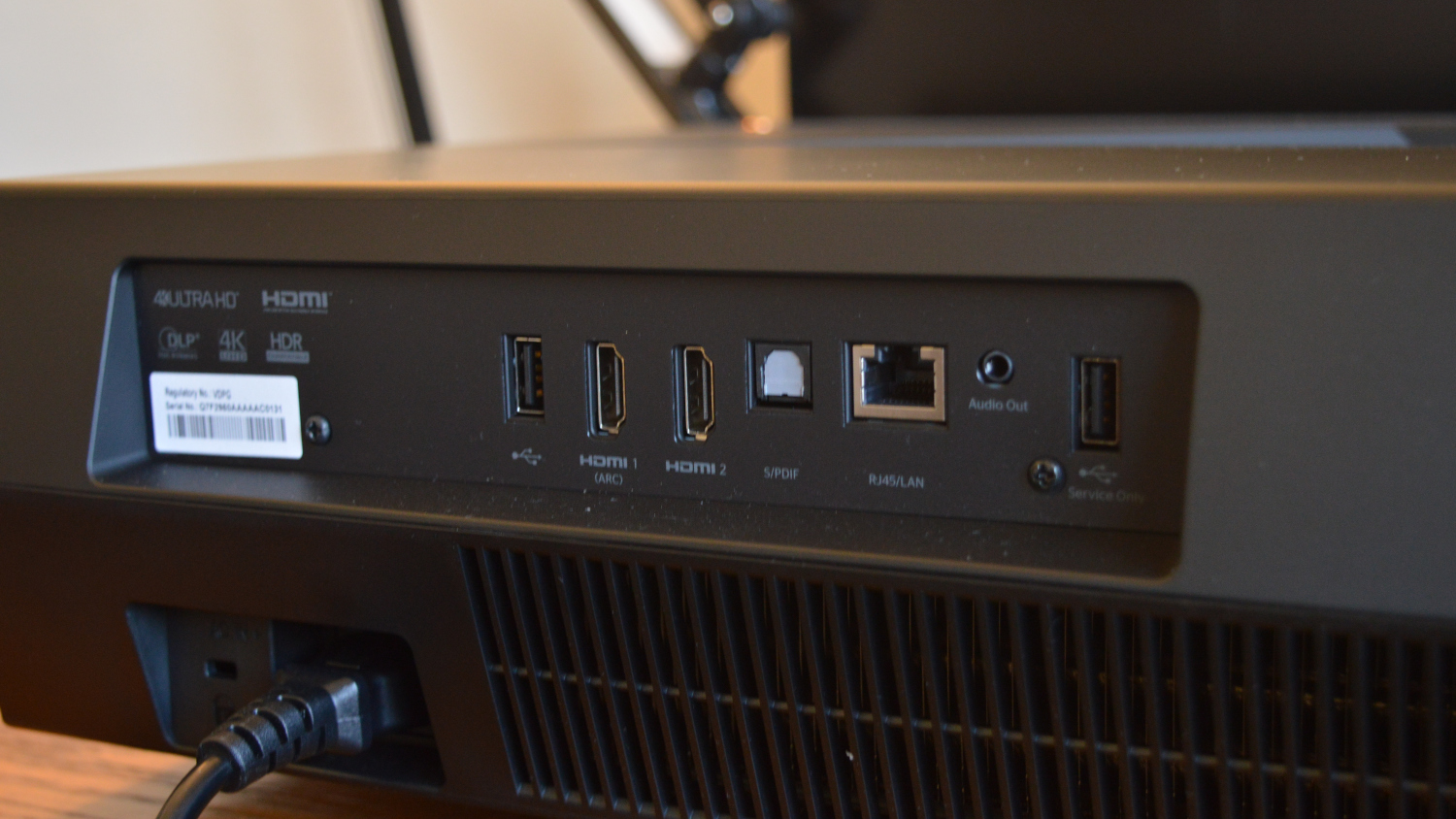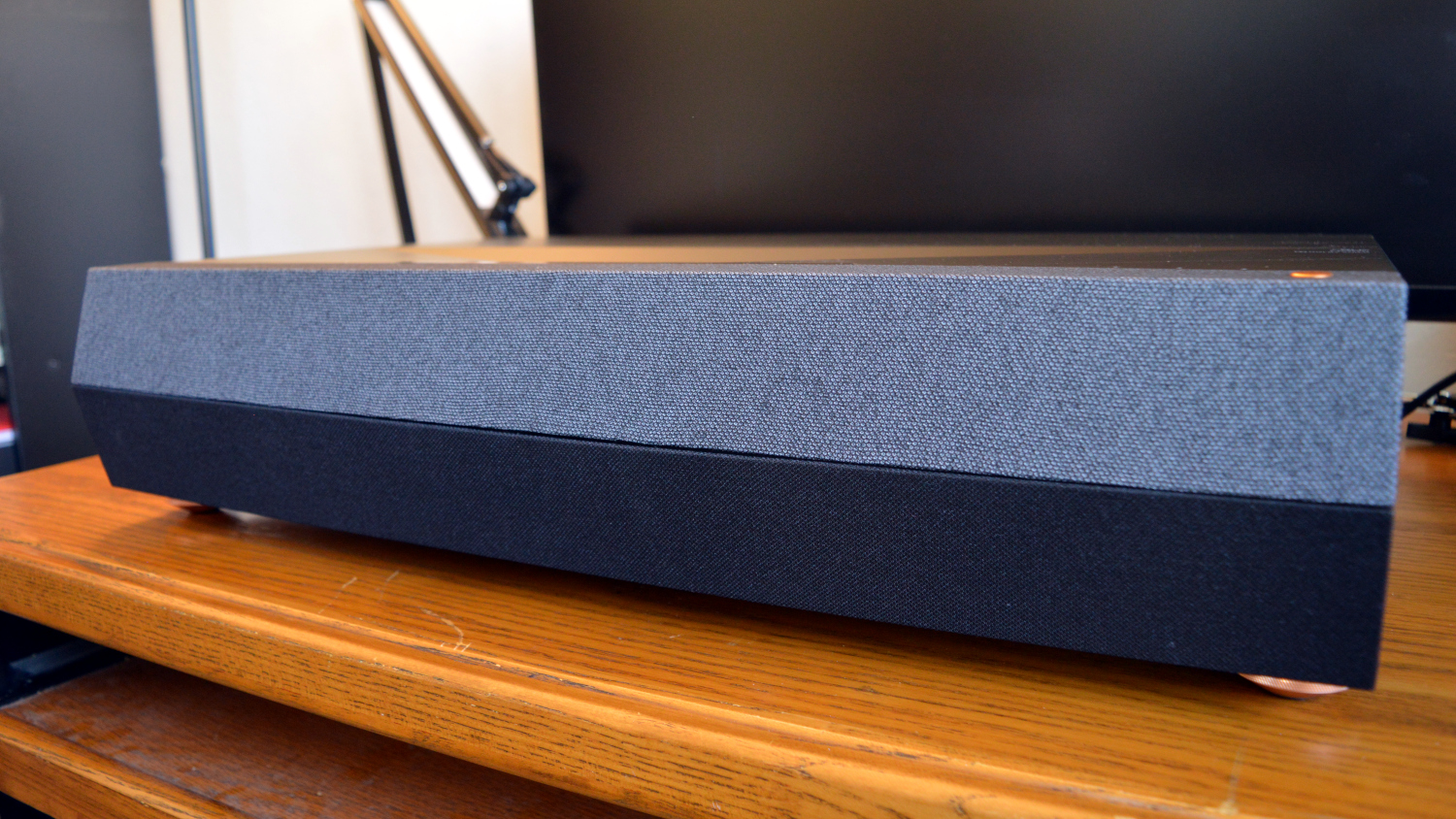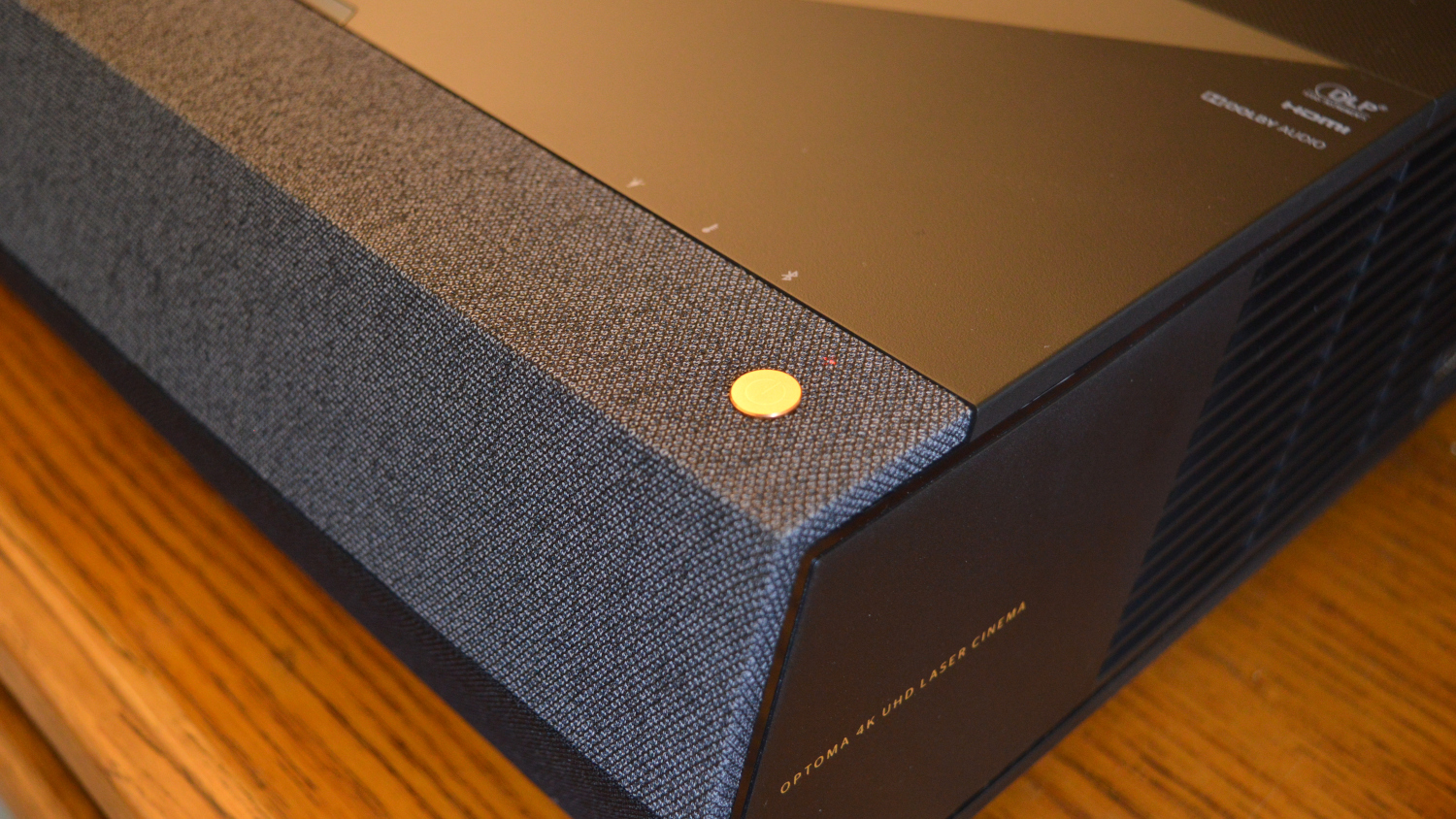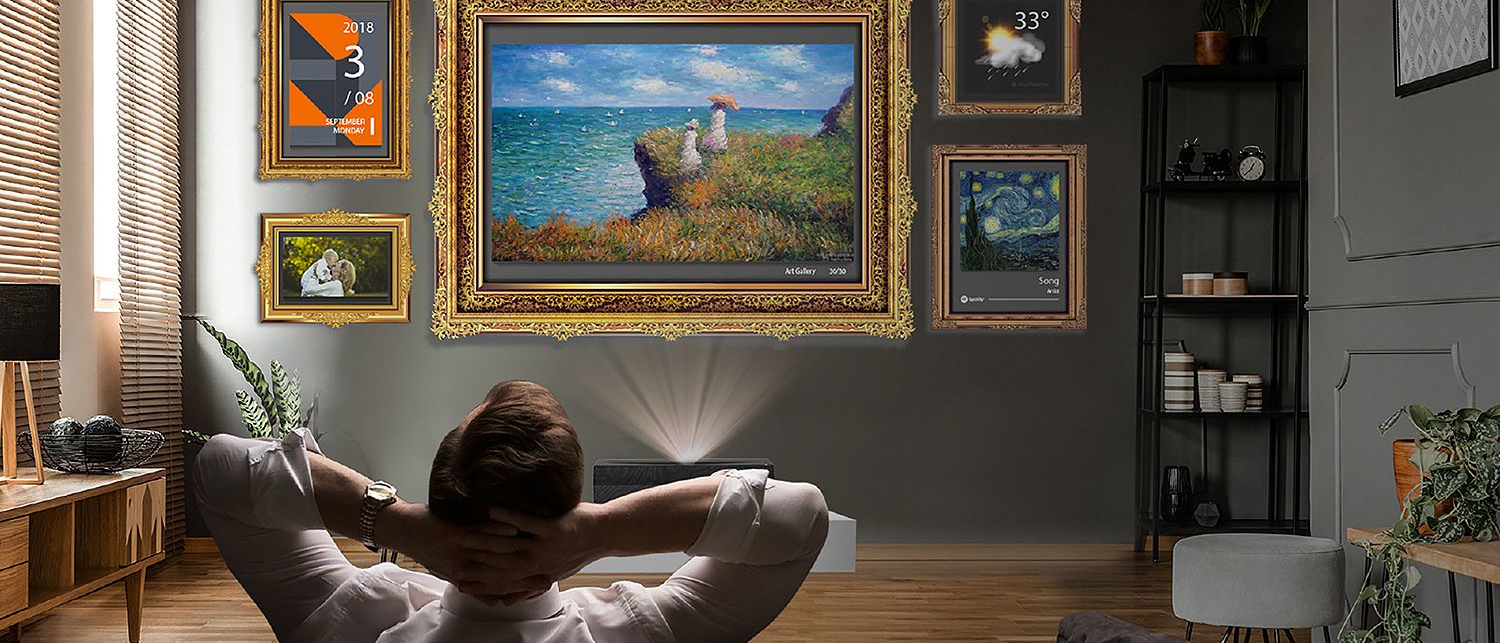TechRadar Verdict
The Optoma CinemaX P1 offers a good image quality and solid built-in sound. It’s let down by the sub-par software experience, but if you use a streaming box, that won’t matter.
Pros
- +
Great image quality
- +
Good built-in sound
- +
Sleek design
Cons
- -
Sub-par built-in OS
- -
Limited to HD streaming
Why you can trust TechRadar
Short-throw projectors are arguably changing the way you can set up your home theater. Gone are the days when you have to mount a projector to the ceiling or make sure nothing is in front of it. Now, you can simply plop a projector down in front of your screen or surface.
Just take a look at the Optoma CinemaX P1.
At a hefty $3,800 (AU$7,999), the projector certainly isn’t cheap — and is reserved more for those who are building a dedicated home theater space and want a quality image to match – but for those who can afford it, it presents spectacular images without any of the fuss of traditional projection systems.
Here's what it's like to test one out.
Design
The Optoma CinemaX P1 is built to look and feel premium – and it succeeds at doing that. The projector offers a super sleek black-and-gold color-scheme that should look great in any home theater – plus the remote is uncomplicated and easy to navigate.
At 22.1 x 5.1 x 15 inches, the projector itself might be a little bigger than it looks in some images, but it’s not too big for something that you can put on a table in front of a screen. That said, it’s not necessarily a great portable option so don't plan on bringing it with you to your friend's next movie night.
On the front of the projector, you’ll find a gray fabric covering for the speakers, while on the sides you’ll find vents for the built-in fans, along with a HDMI 2.0 port and USB port on the right side for convenience. And, of course, on the top, you’ll get an angled opening for the laser in the projector.
The back of the projector is where you’ll get all the other ports, and there’s a good selection of them. There’s an ethernet port in case you don’t want to use Wi-Fi, and S/PDIF and aux ports for audio. There are also two HDMI 2.0 ports, bringing the total to three, and a USB port.
The remote is also well-designed – and far less complicated than most other projector remotes, and bears a striking resemblance to the Nvidia Shield TV remote, with a circular directional pad and selection button in the middle, volume controls, and software controls.
You’ll have to navigate through software menus to access most of the settings and features, rather than being able to press buttons for certain functions. It’s not a bad setup though – and we prefer having to take the extra time to navigate through menus for first-time setup, then never having to see those buttons and controls again.

Setup and software
Setting up a projector can be intimidating, but thankfully the CinemaX P1 walks you through most of it: When you turn the projector on for the first time, you’ll be guided through connecting to your Wi-Fi network and optionally creating an Optoma account. Unfortunately, you won’t really be guided through much of tweaking the image of the projector, so you’ll have to do that manually when you’re done with the initial setup.
There are a few things to note about setting up the image of the projector. Using short-throw projectors like this can be tricky with projection screens, so you might want to consider either making sure you have a flat white wall, or buying a specialized taut projector screen like the ALR101 screen that Optoma sells. That’s because of the fact that average projector screens that you mount to the ceiling and pull down usually aren’t perfectly straight – and those flaws are amplified by a projector that’s so close to the screen.
Thankfully, if you do have a standard projector screen, you can use Optoma’s SmartFit geometric calibration tech to remedy some of those issues. The way it works is actually pretty smart – it relies on a smartphone app that connects to the projector through Wi-Fi, and calibrates the projection based on a photo that you take in the app. After using SmartFit, we found that the protection was far better fit to the screen we tested on, though there were still a few warps here and there that rendered the image a little imperfect. All that to say, use a completely flat surface if possible, or get used to a good, but not perfect, image.
The software on the projector does, unfortunately, leave a lot to be desired. While that’s fine for things like correcting the image and adjusting the fit, if you’re looking for an all-encompassing software experience for streaming your favorite apps and services, you’ll probably want to connect a streaming box. The software itself is built on Android — but it’s a lot worse than Android TV. You can install some streaming services on there, including Netflix and Amazon Prime, but there are some major services missing too — like Disney+. In the end, we gave up on the built-in software and plugged in an Apple TV 4K, and suspect most will want to do something similar.
Generally, setting up the projector, both physically and image-wise, was pretty easy. While the software could make fitting the image to the screen a little more straightforward, it was easy to figure out once we were aware of the SmartFit tool.

Performance
The Optoma CinemaX P1 isn’t IMAX-grade, but it’s still relatively pricey in a world where the cost of 4K projectors is coming down. Thankfully, however, it delivers.
This projector is a DLP laser projector with a Texas Instruments XPR DLP chip built into it, which results in an excellent contrast ratio. It also means that the projector, natively, projects at 1080p, but uses pixel shift technology to ultra-quickly emit four times that in a way that’s invisible to the naked eye. Some purists may disagree, but the result is basically a 4K image.
In HDR, the image quality on this projector is stunning. Colors are deep and vivid, while black levels are actually pretty good. Projector technology just isn’t able to reproduce OLED-level black-levels the same way an OLED TV can, and that may never happen — but as long as you’re aware of that going in, you’ll be pleasantly surprised.
In HDR, you’ll get a number of image modes, including film, detail, bright, and standard. I ended up starting with standard mode and tweaking a few things from there, but ultimately, I was able to achieve a beautifully detailed image. That was especially true with content like David Attenborough’s Our Planet, which offered rich colors, while Star Wars: Rise of Skywalker emphasized the relatively deep black levels that you’ll get. The projector supports HDR10, but you won’t get Dolby Vision or HDR10+.
In terms of brightness, this projector offers up to 3,000 lumens, which is heightened considering the fact that this is a short-throw projector, versus a standard one. While most of our testing was done in a room with almost no ambient light, even with the blinds open, we were able to achieve a relatively detailed image that still made for good viewing. Not as good, to be sure, but better than most in this price range.
Non 4K HDR content looks great too — but there is a noticeable difference. HDR content is significantly brighter than SDR content, for starters. That’s to be expected, and a good projector screen will help, but it’s still something to note.
In SDR, you’ll get a number of different viewing modes, including cinema, HDR sim, game, reference, bright, and user. We ended up largely sticking to reference, but again, tweaking a few things like brightness.
One more reason to use a streaming box: the the upscaling tech isn’t amazing and if you use the built-in software to stream, you’re weirdly limited to 1080p video. That said, you’ll still get a better image quality than most at 1080p, so it’s not all bad news.
Sound
The Optoma CinemaX P1 actually has great speakers built into it, and while we still recommend upgrading to an actual sound system if you have the finances and the space, in a pinch you’ll still get decent audio quality without too many compromises.
We ended up watching the entirety of Star Wars: Rise of Skywalker with the built-in speakers, and while there were definitely moments where a better bass response would have been appreciated, the decent mid tuning and the good detail in the high end make it more than usable.
It makes sense – the speakers in the projector were actually developed by Optoma’s NuForce team, which develops some great headphones and speakers.

Final verdict
The Optoma CinemaX P1 isn’t perfect, but it has a lot to offer in this price range. The audio is good, but it doesn’t replace real speakers, and the upscaling could be better. Worst of all is the built in operating system, which limits streaming to 1080p and is simply too basic and buggy.
But with a good streaming stick or box, and a pair of bookshelf speakers, you’ll get a high-end image quality in a projector that you can place inches from your projection surface – and with effectively a 4K resolution. Considering the fact that the LG HU85LA comes at thousands of dollars more, and comparably-priced projectors either aren’t as bright or don’t offer 4K, the Optoma CinemaX P1 is well-worth buying if you want an ultra short-throw projector at under $4,000 / AU$9,000.
- Shopping for a new beamer? Check out our list of the best projectors
Christian is a writer who's covered technology for many years, for sites including Tom's Guide, Android Central, iMore, CNN, Business Insider and BGR, as well as TechRadar.
